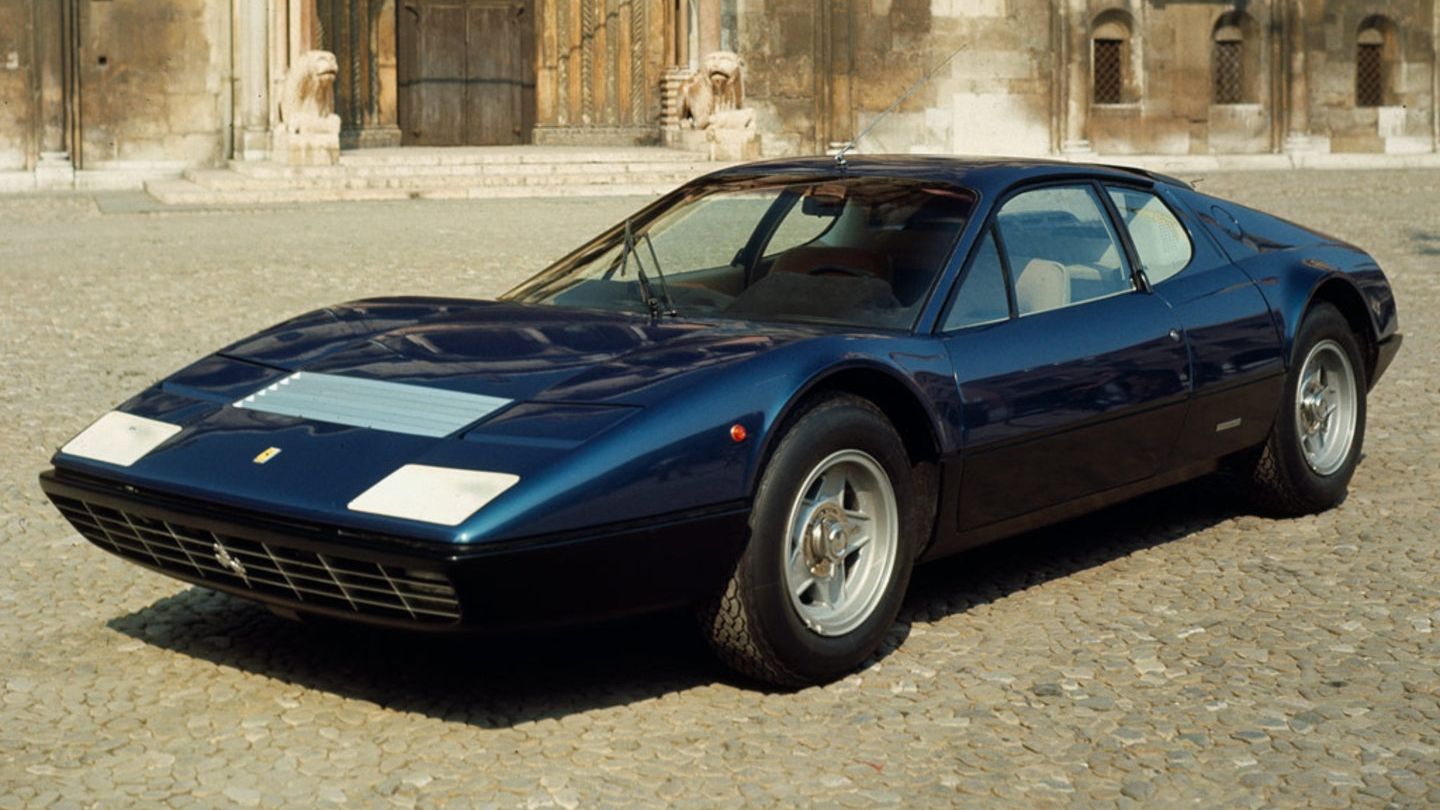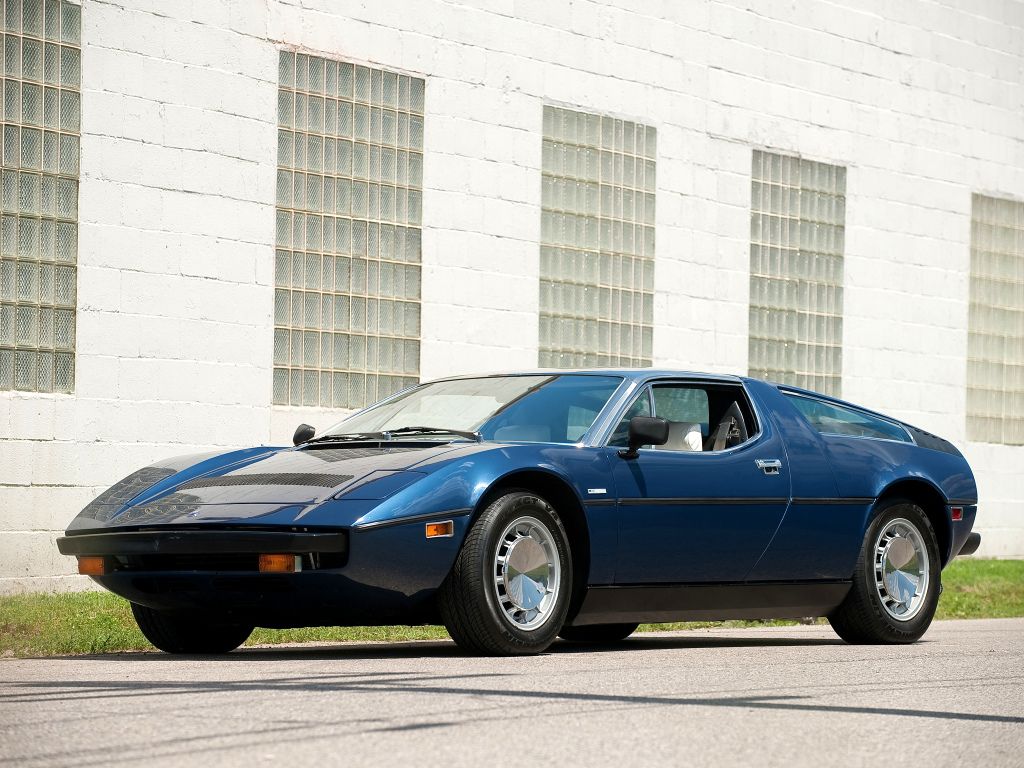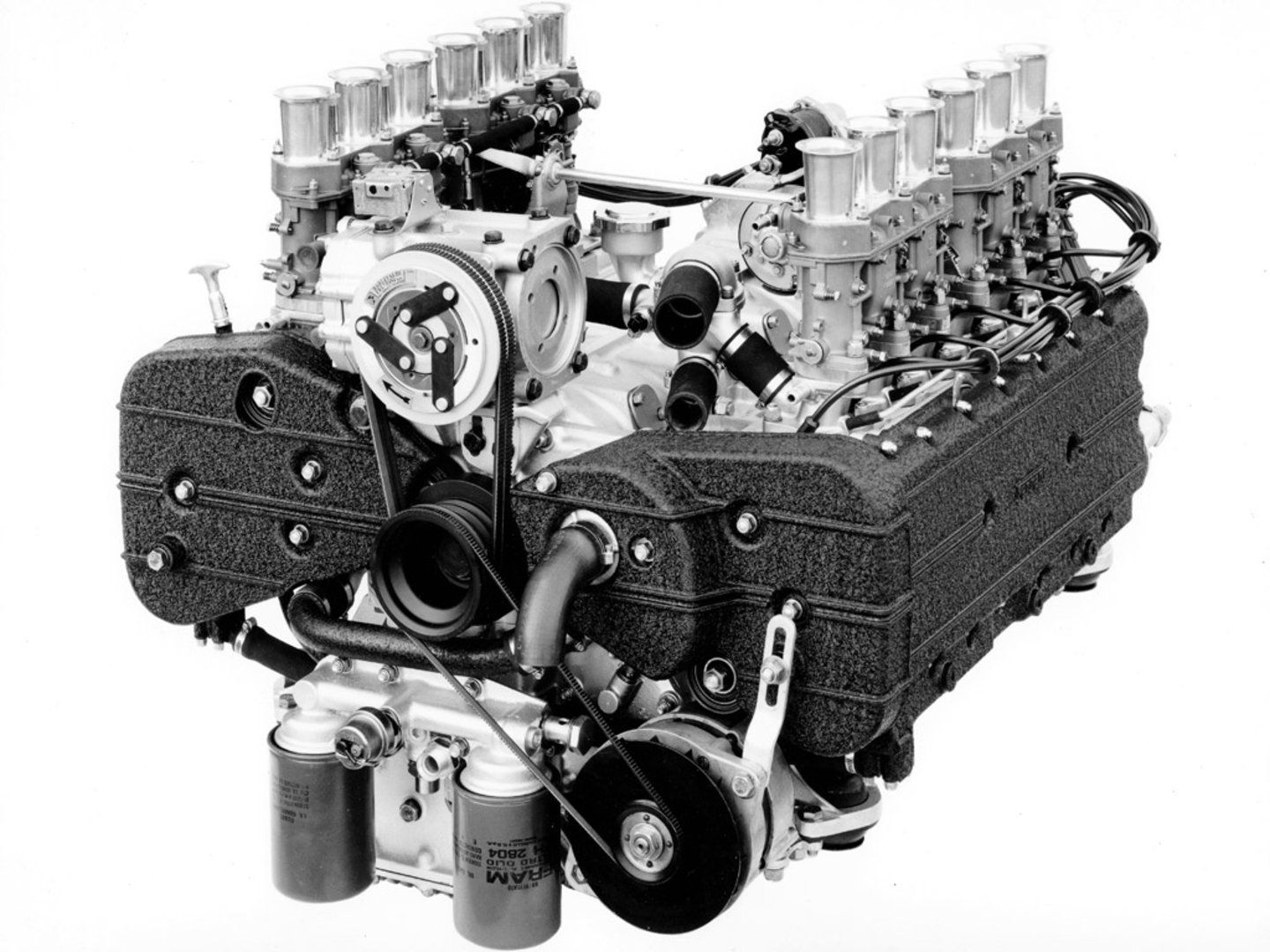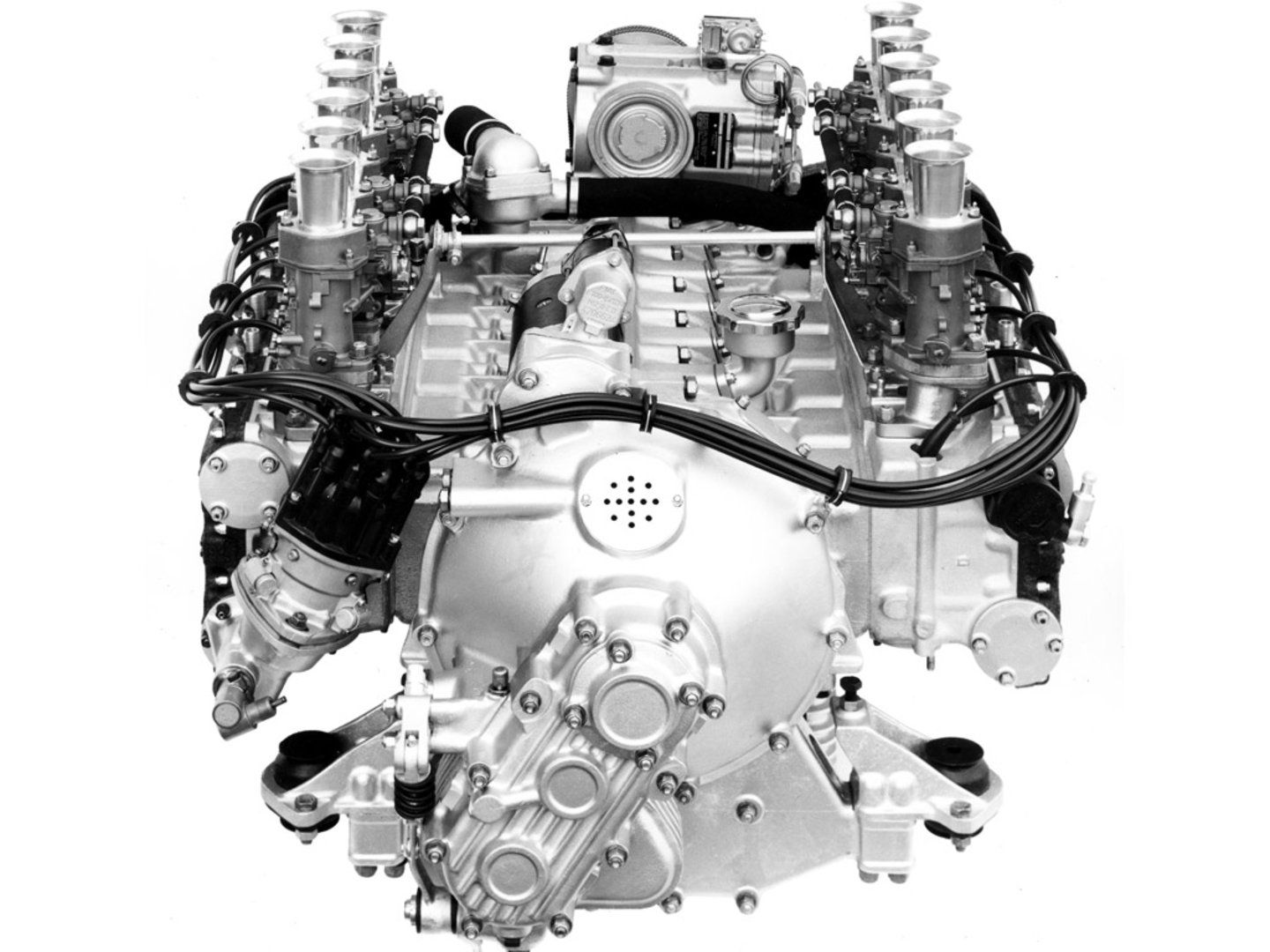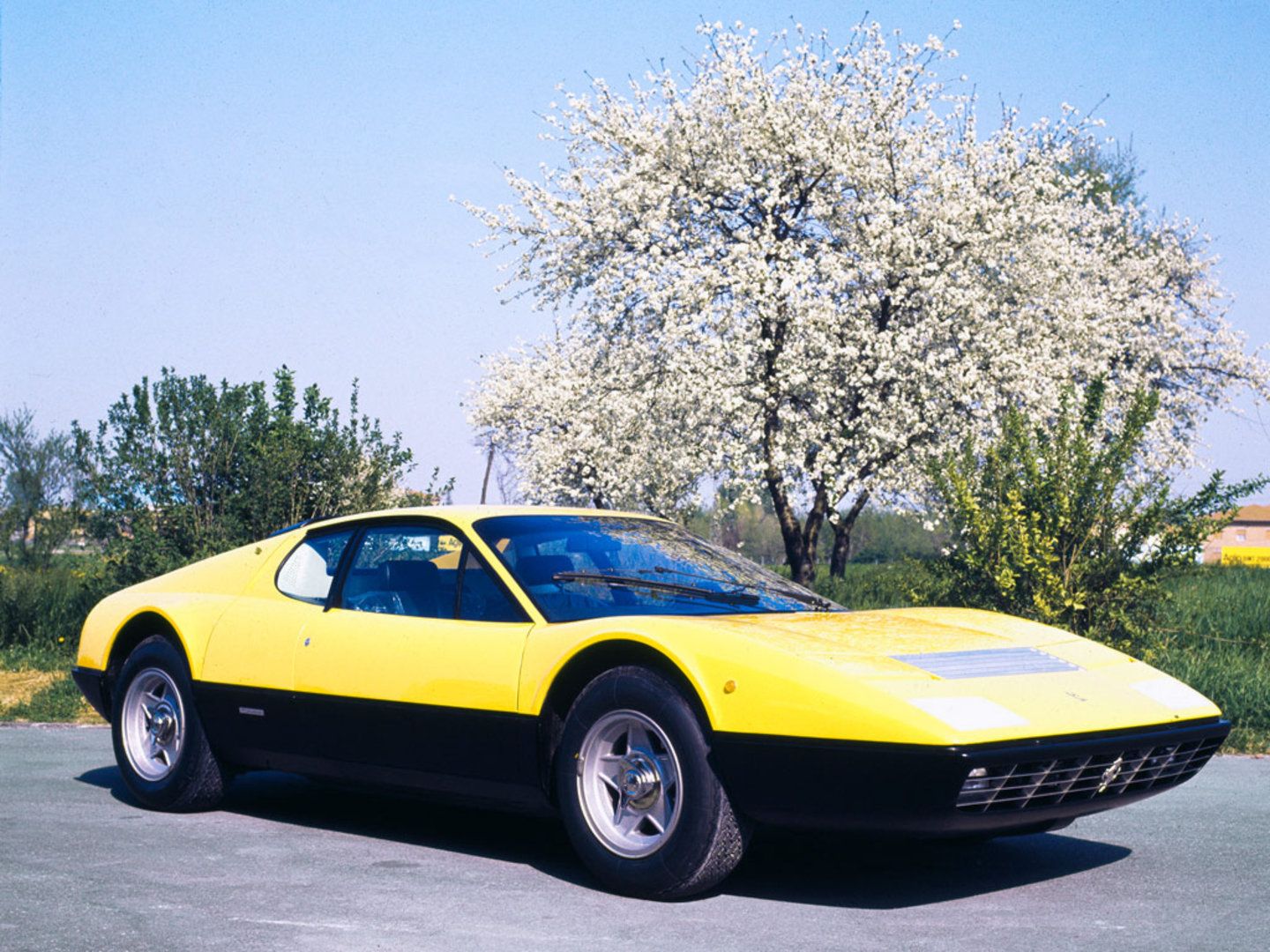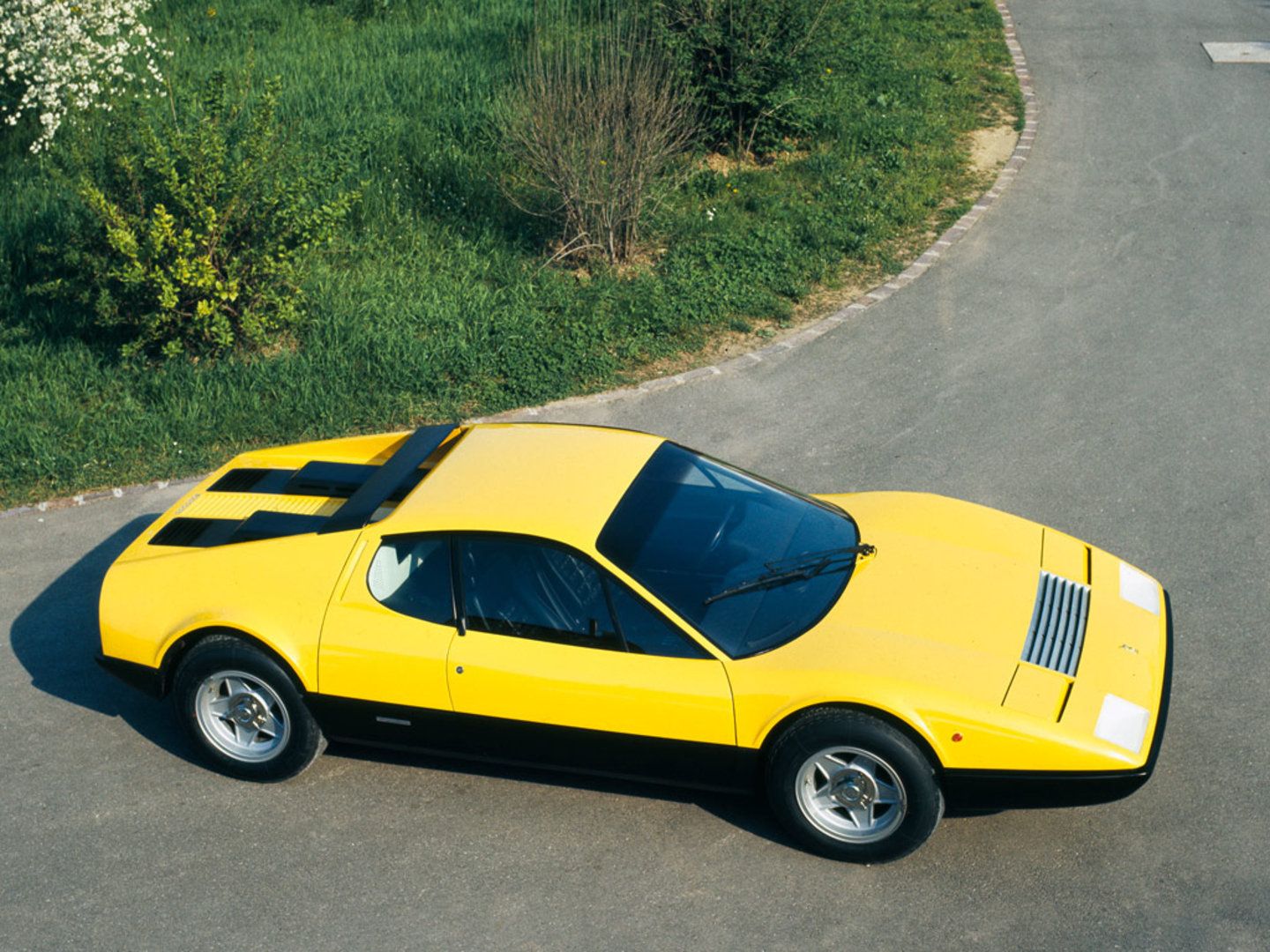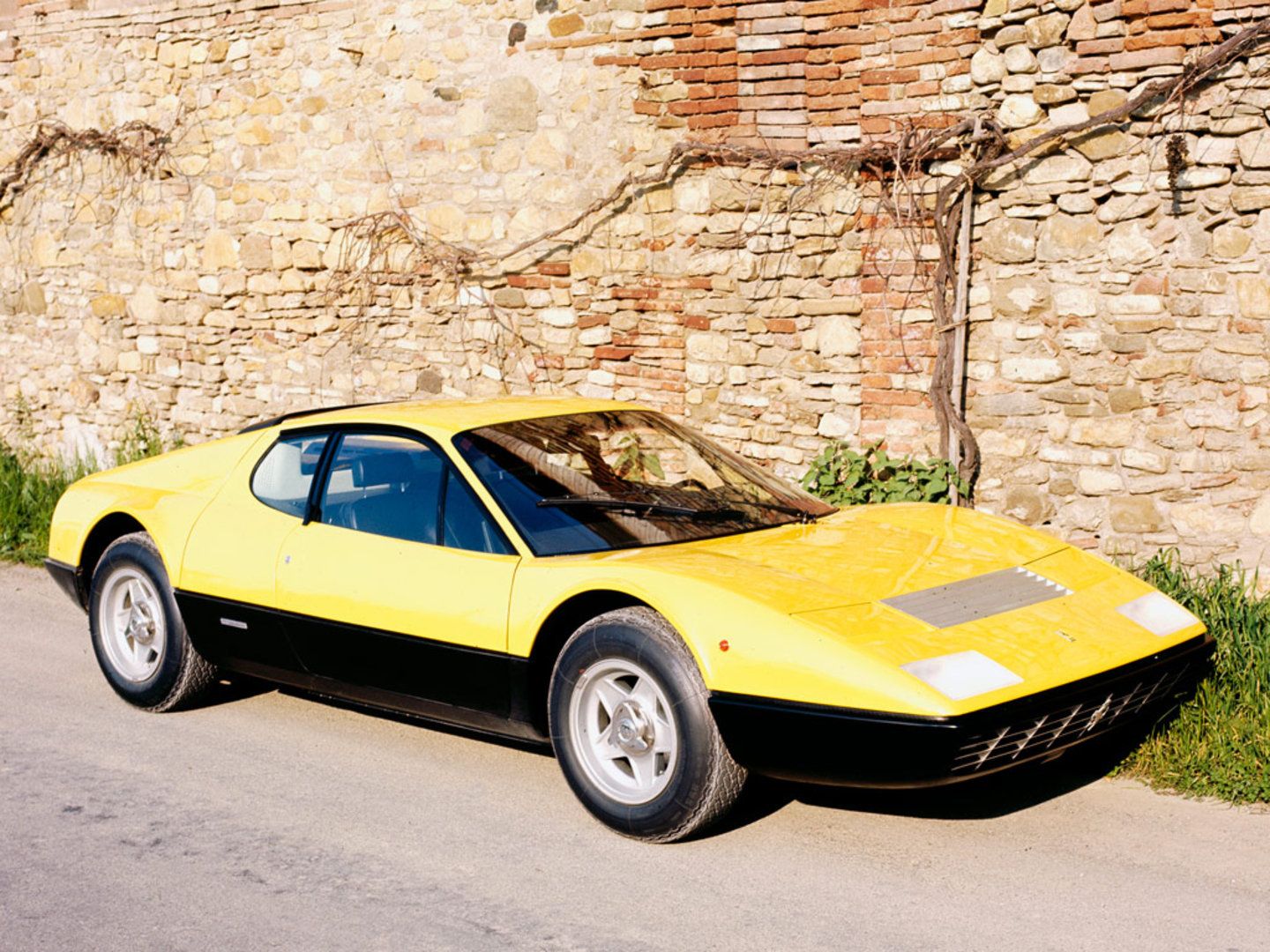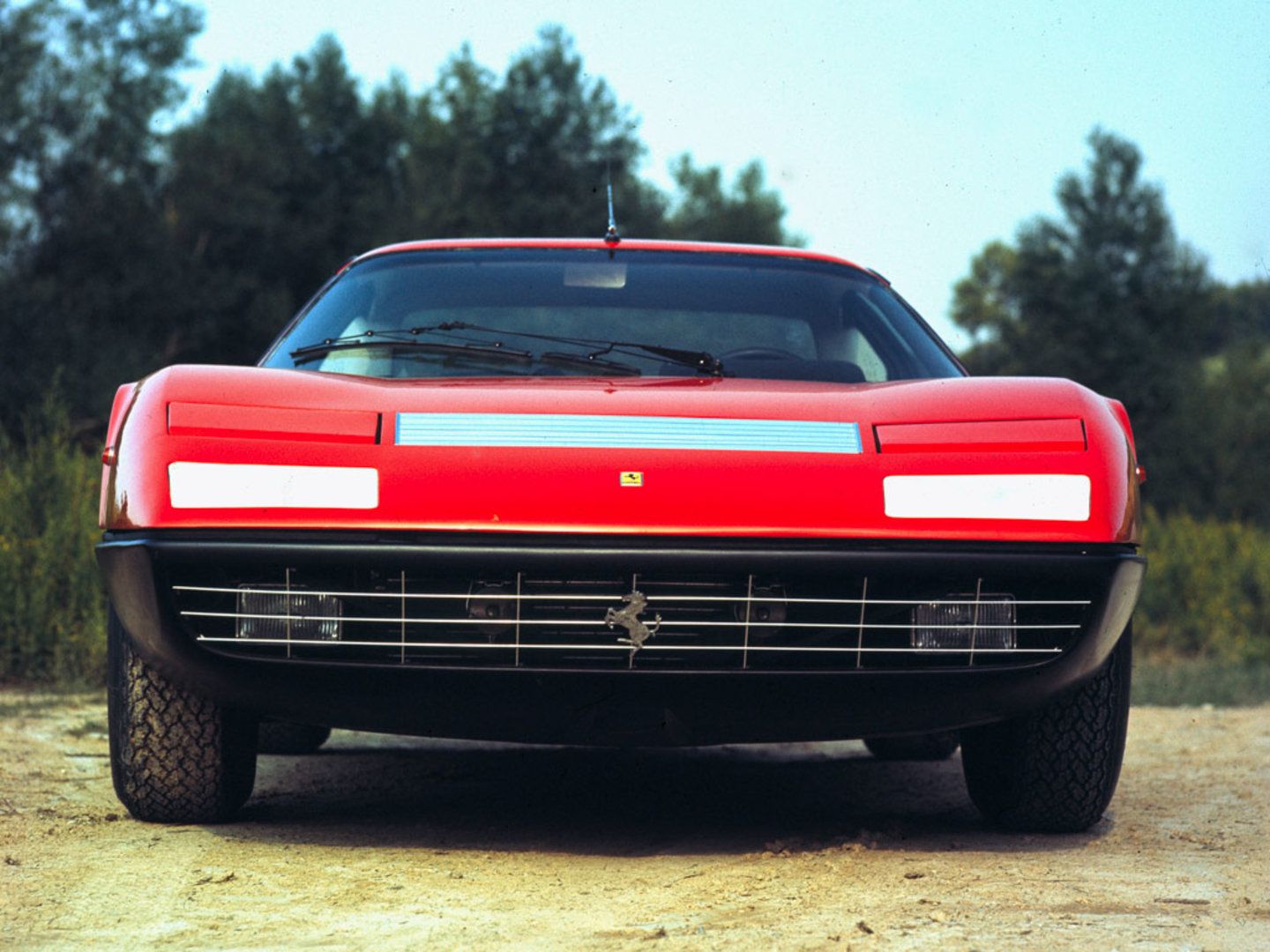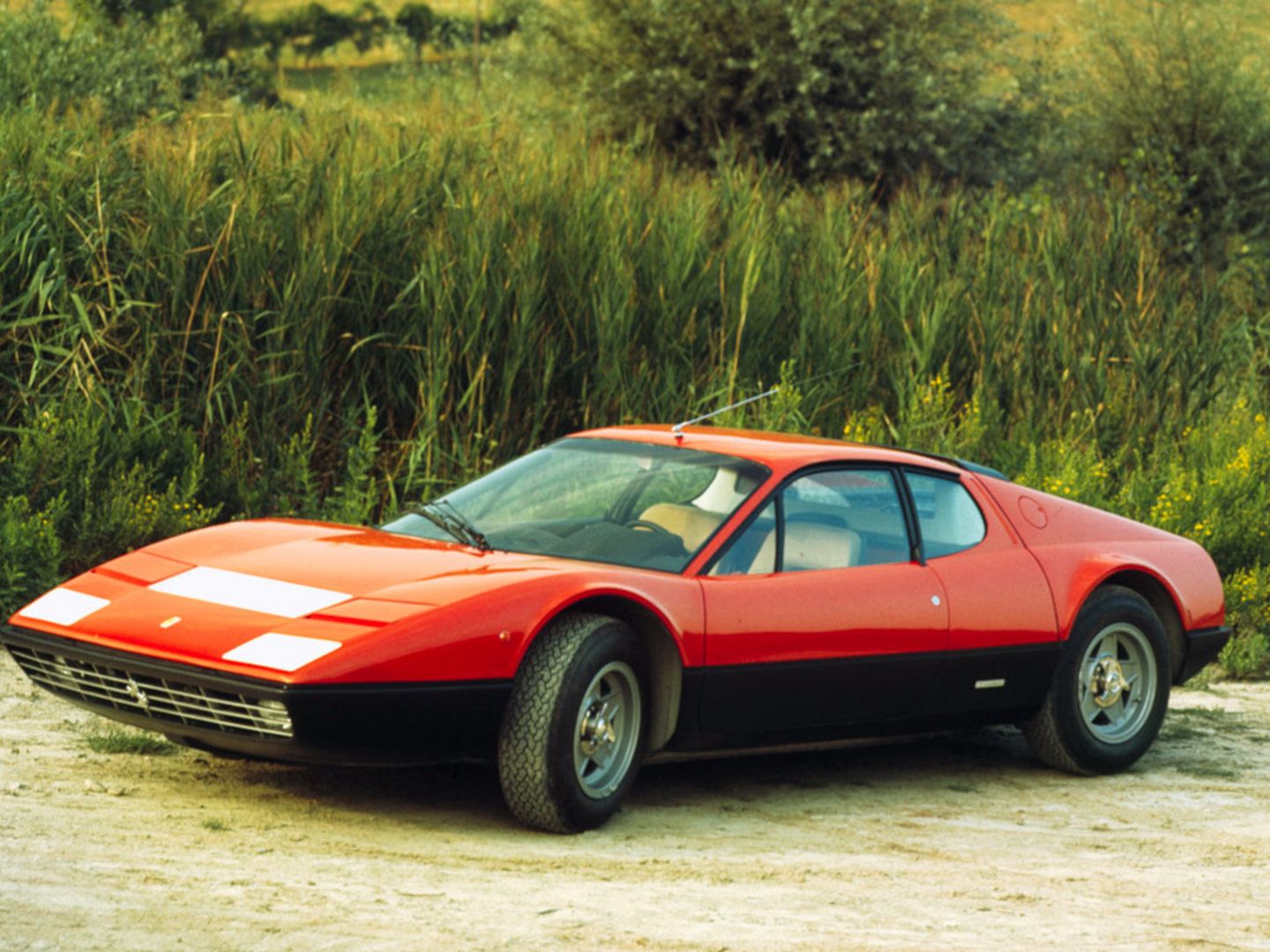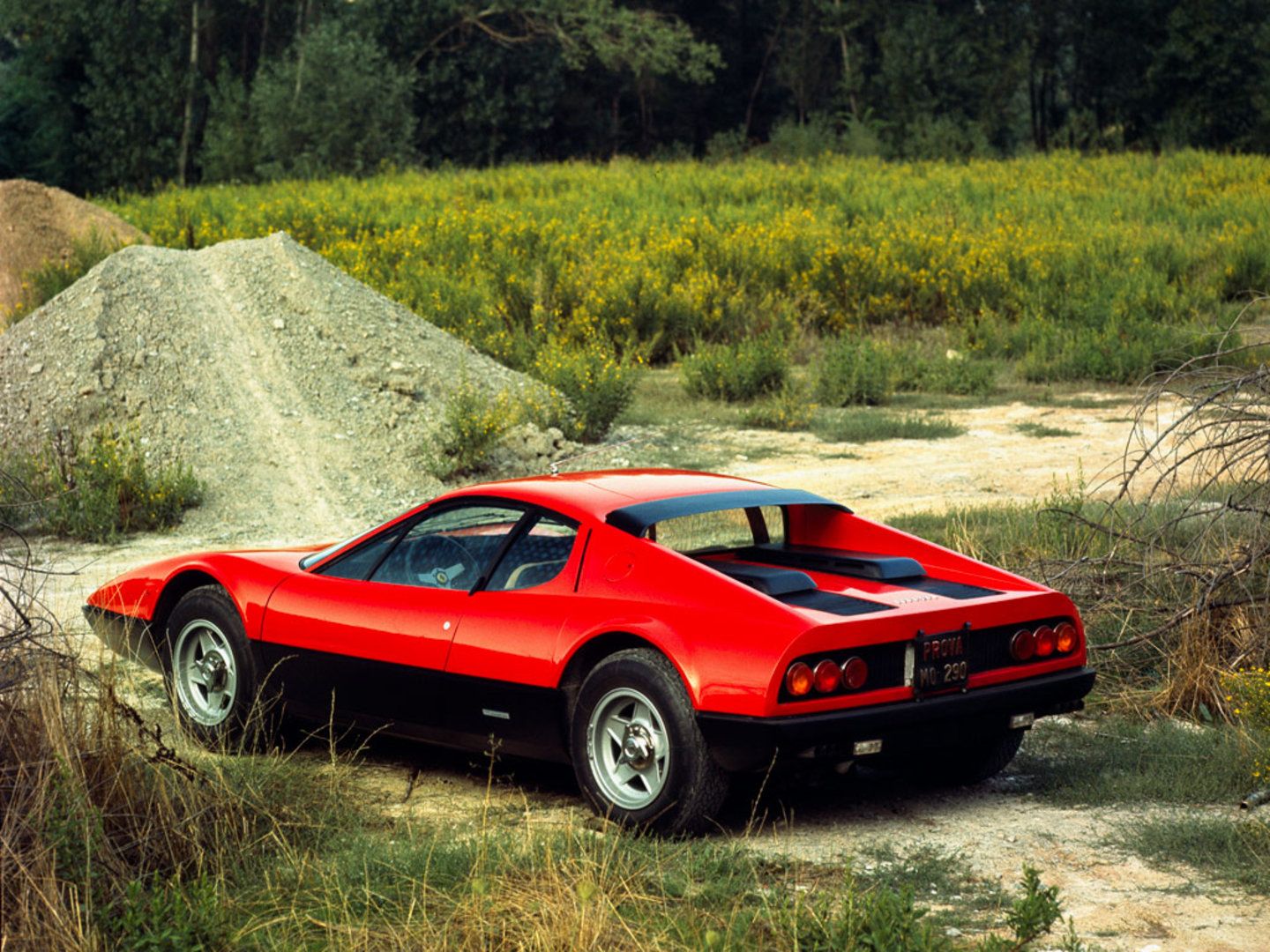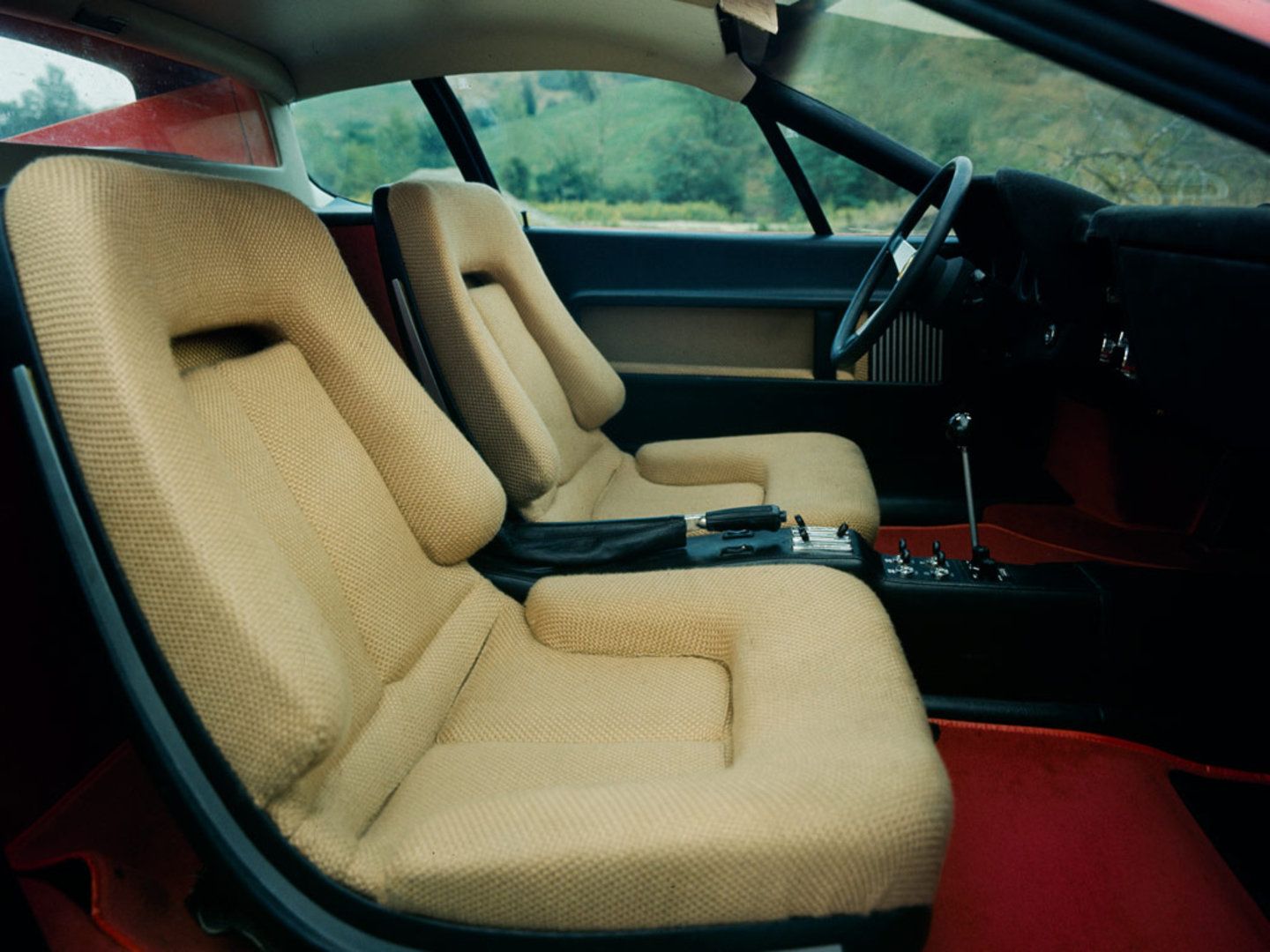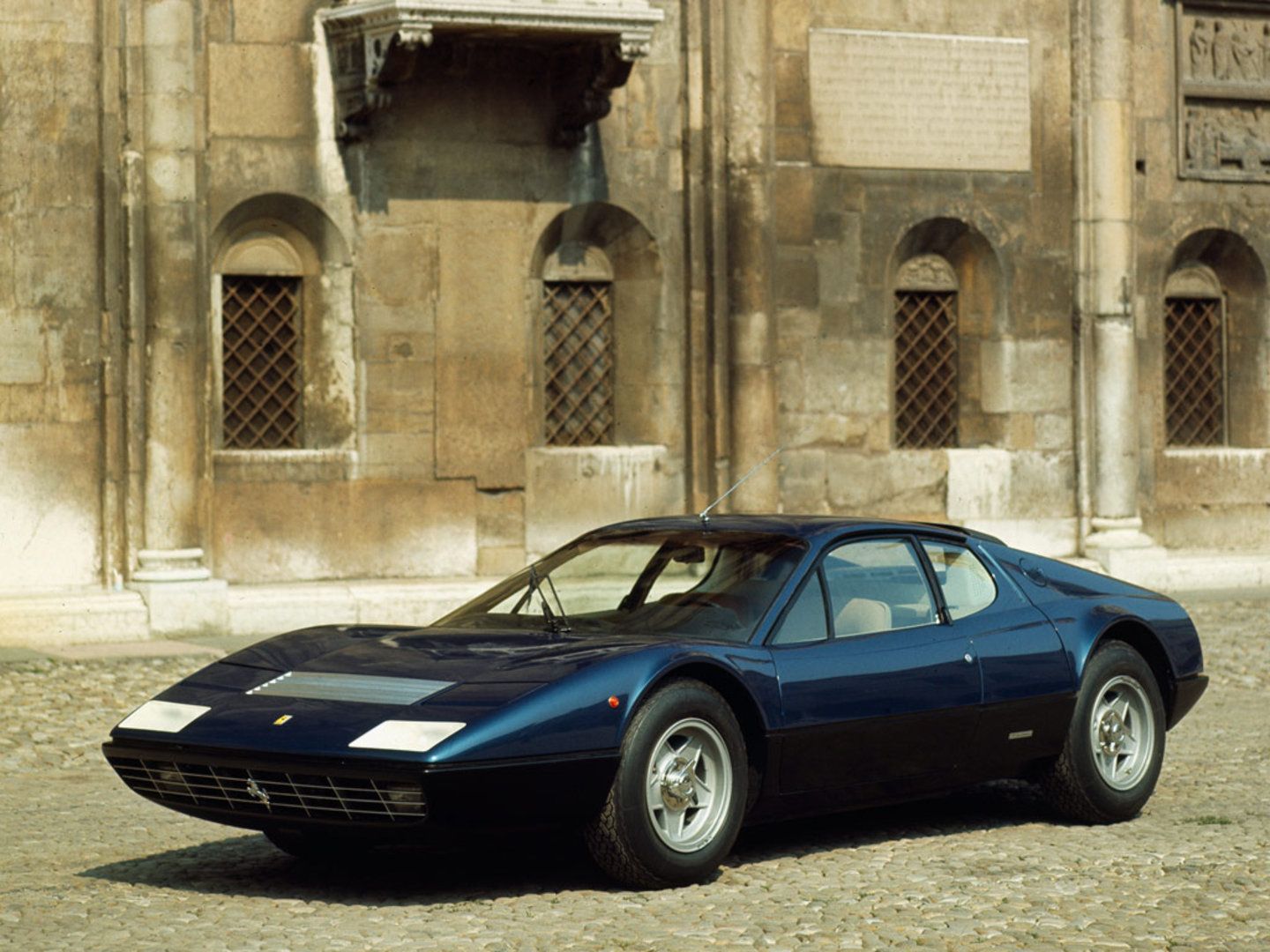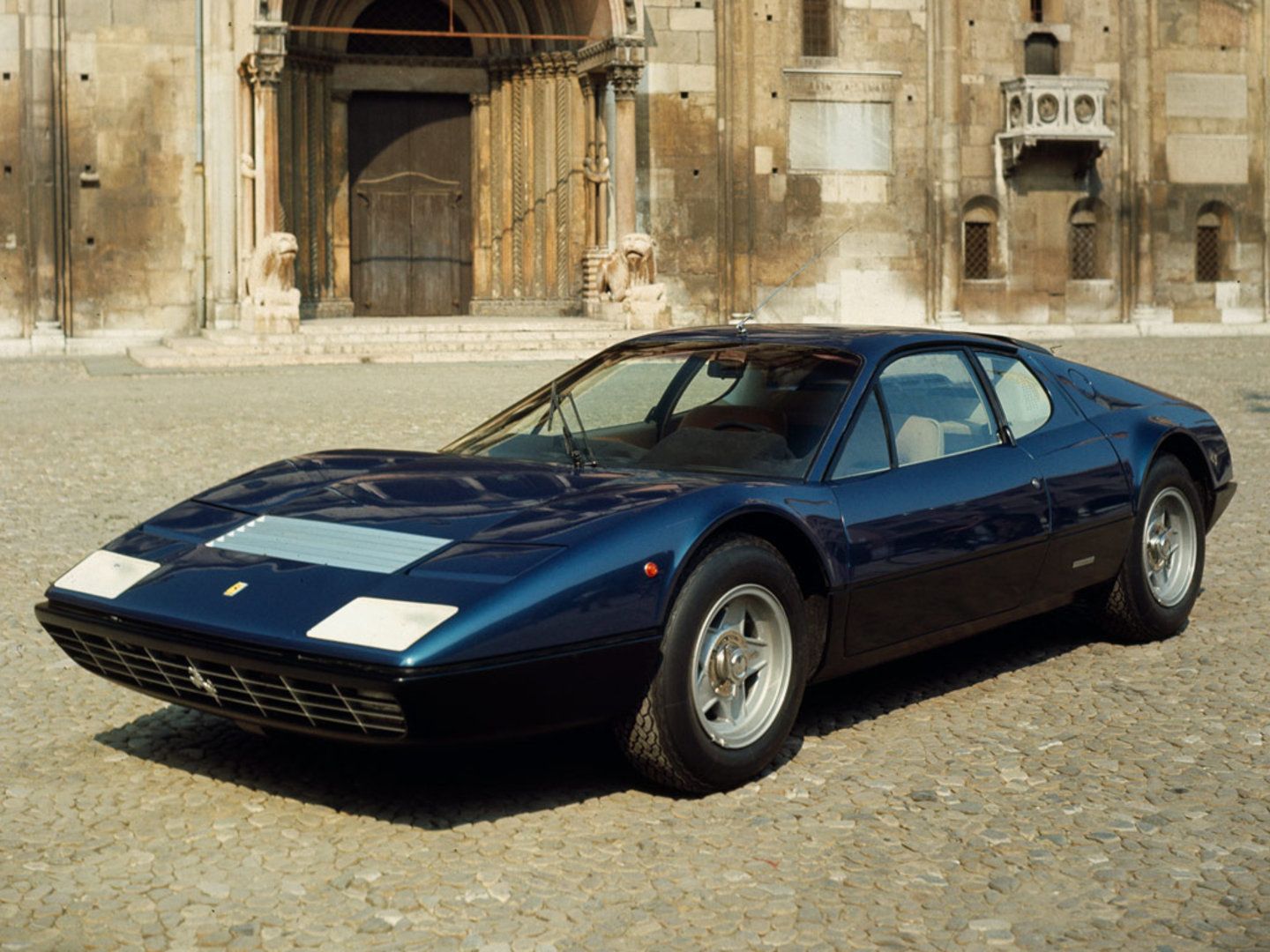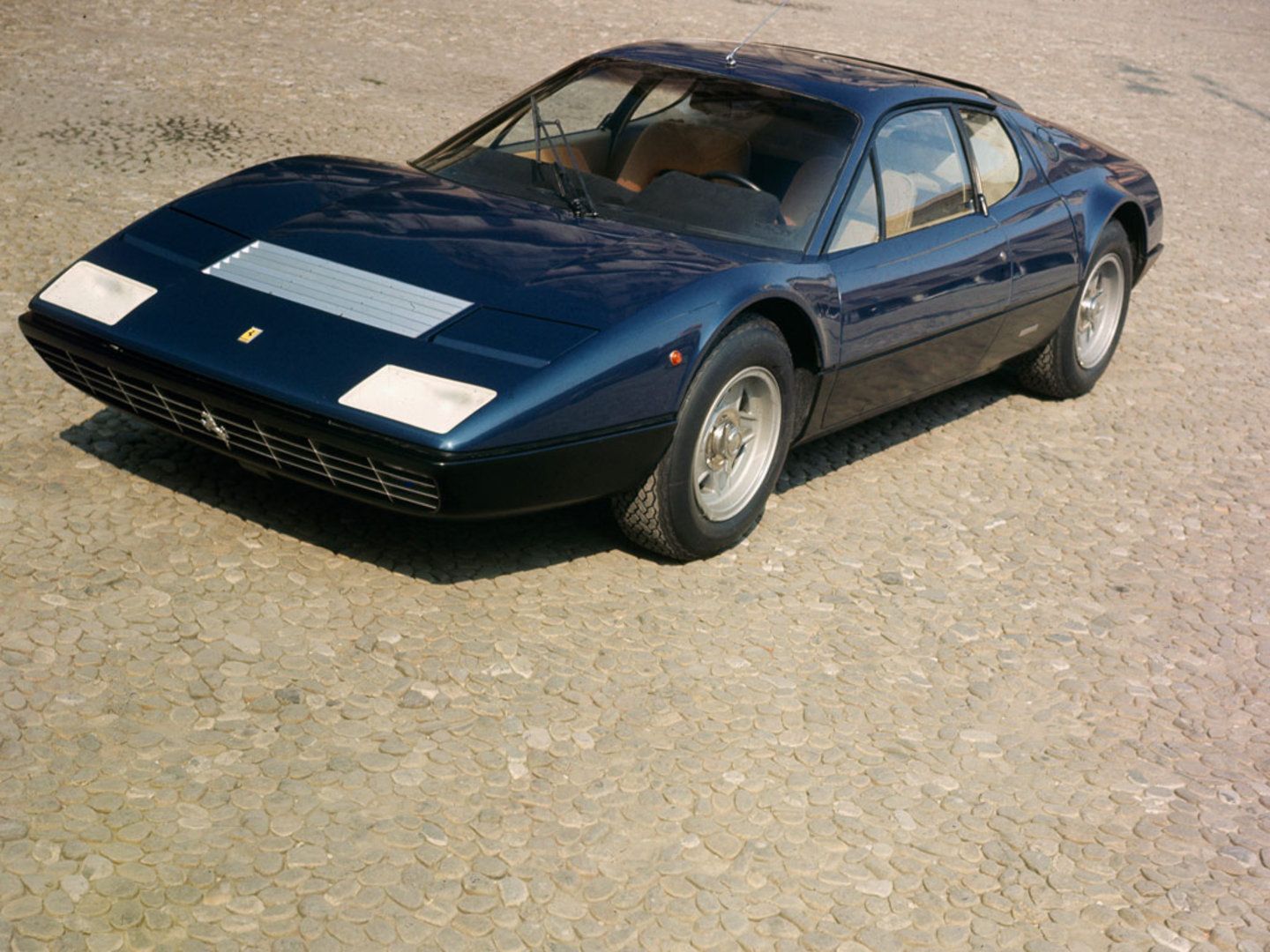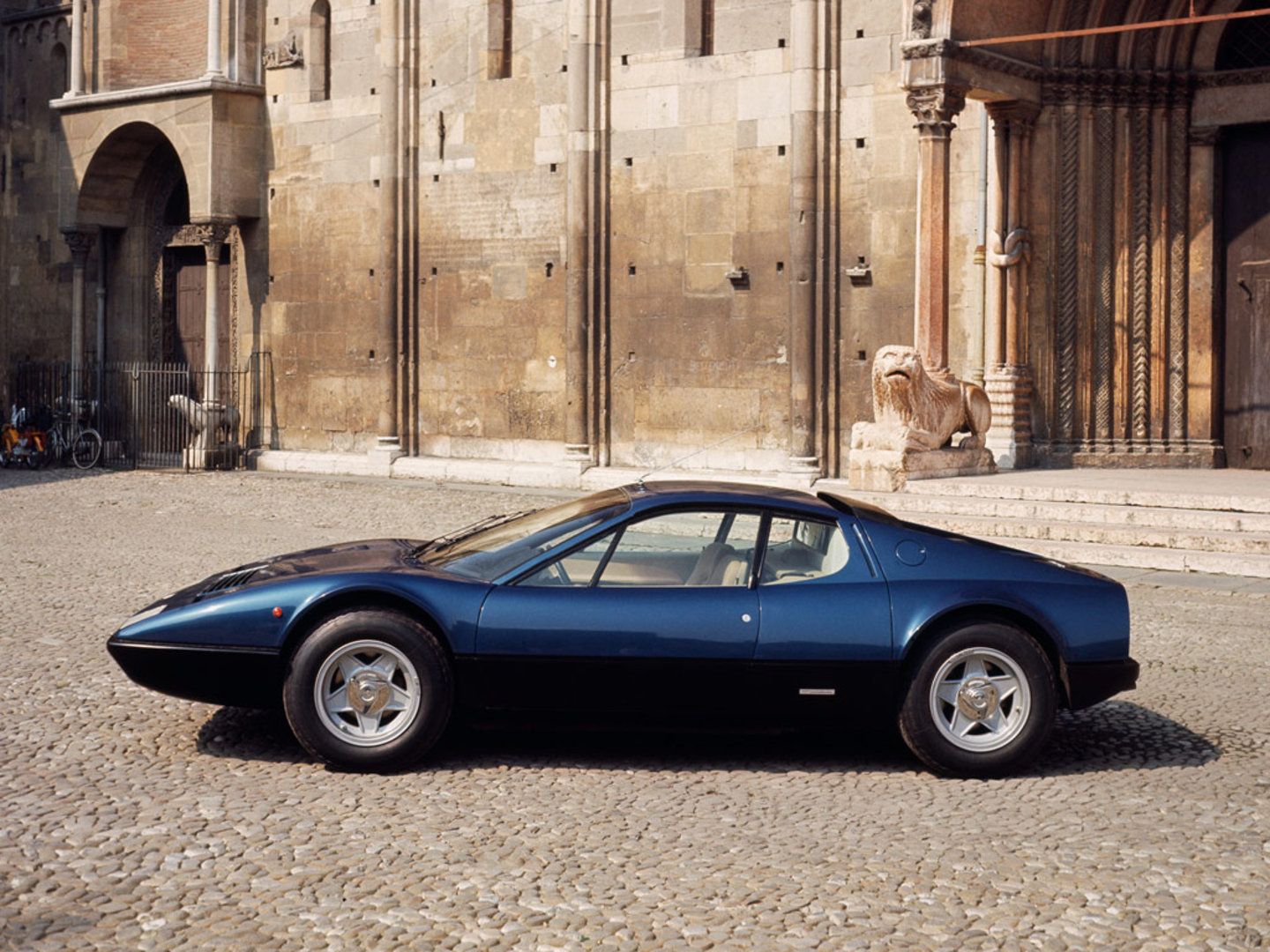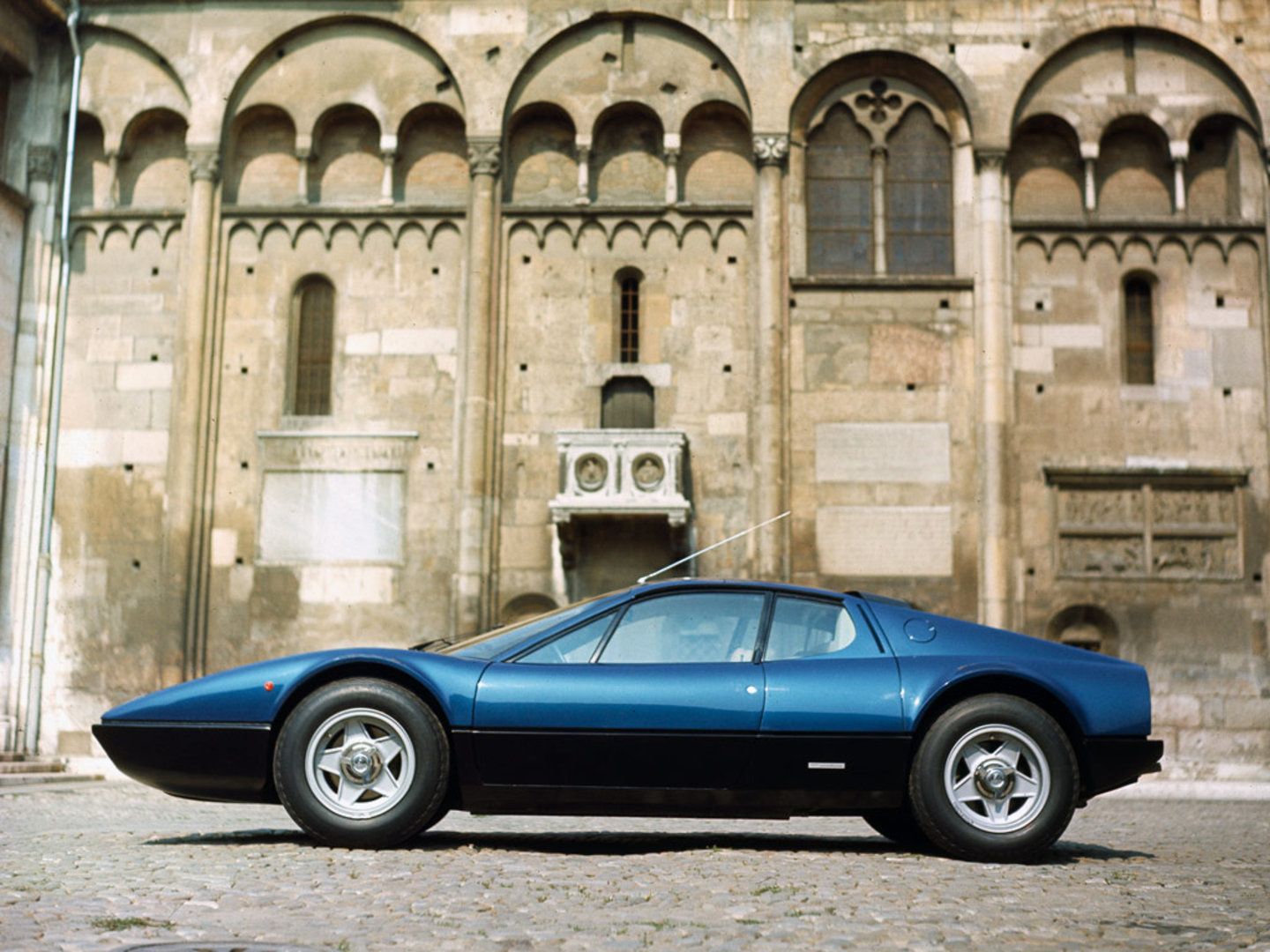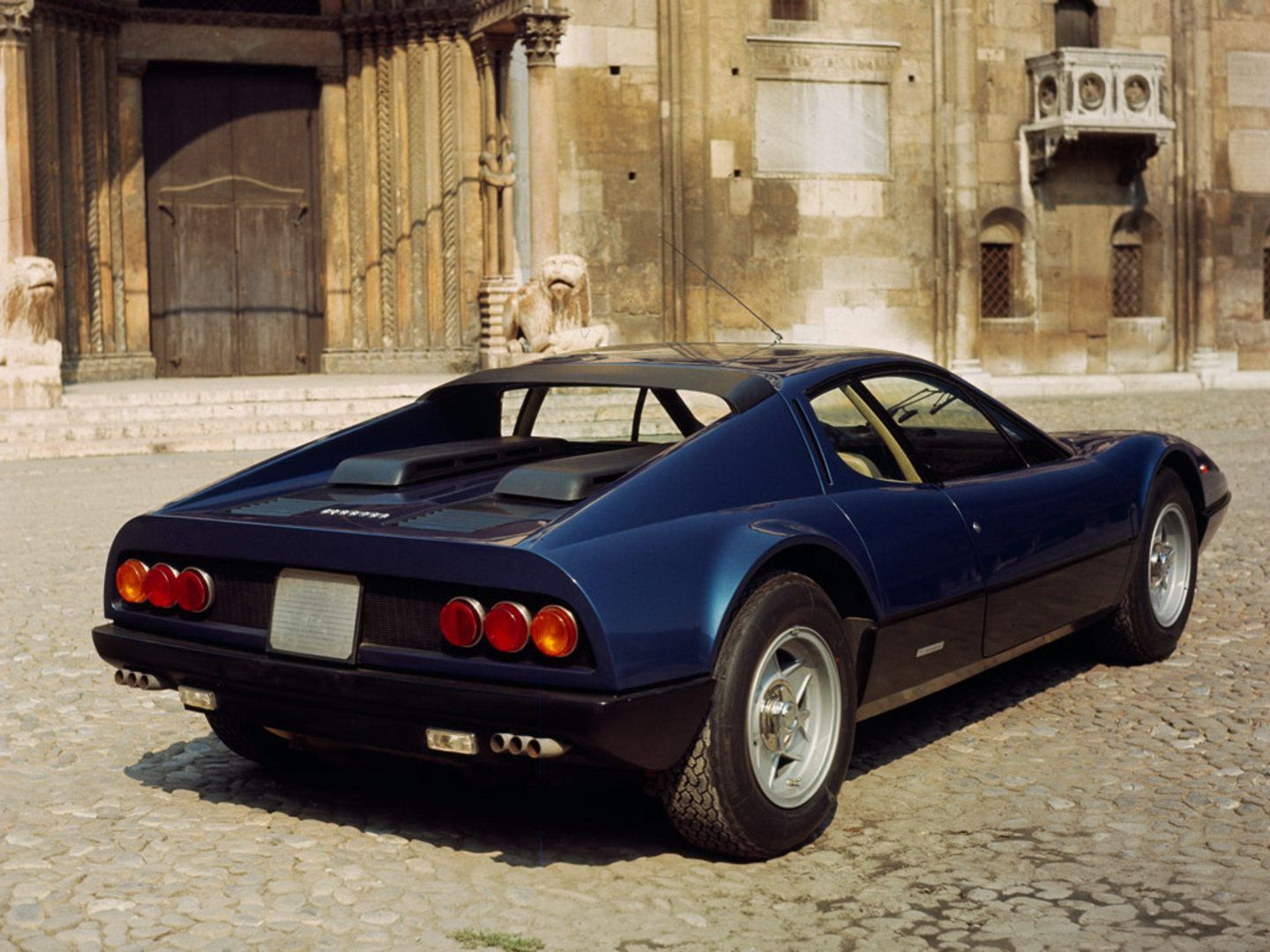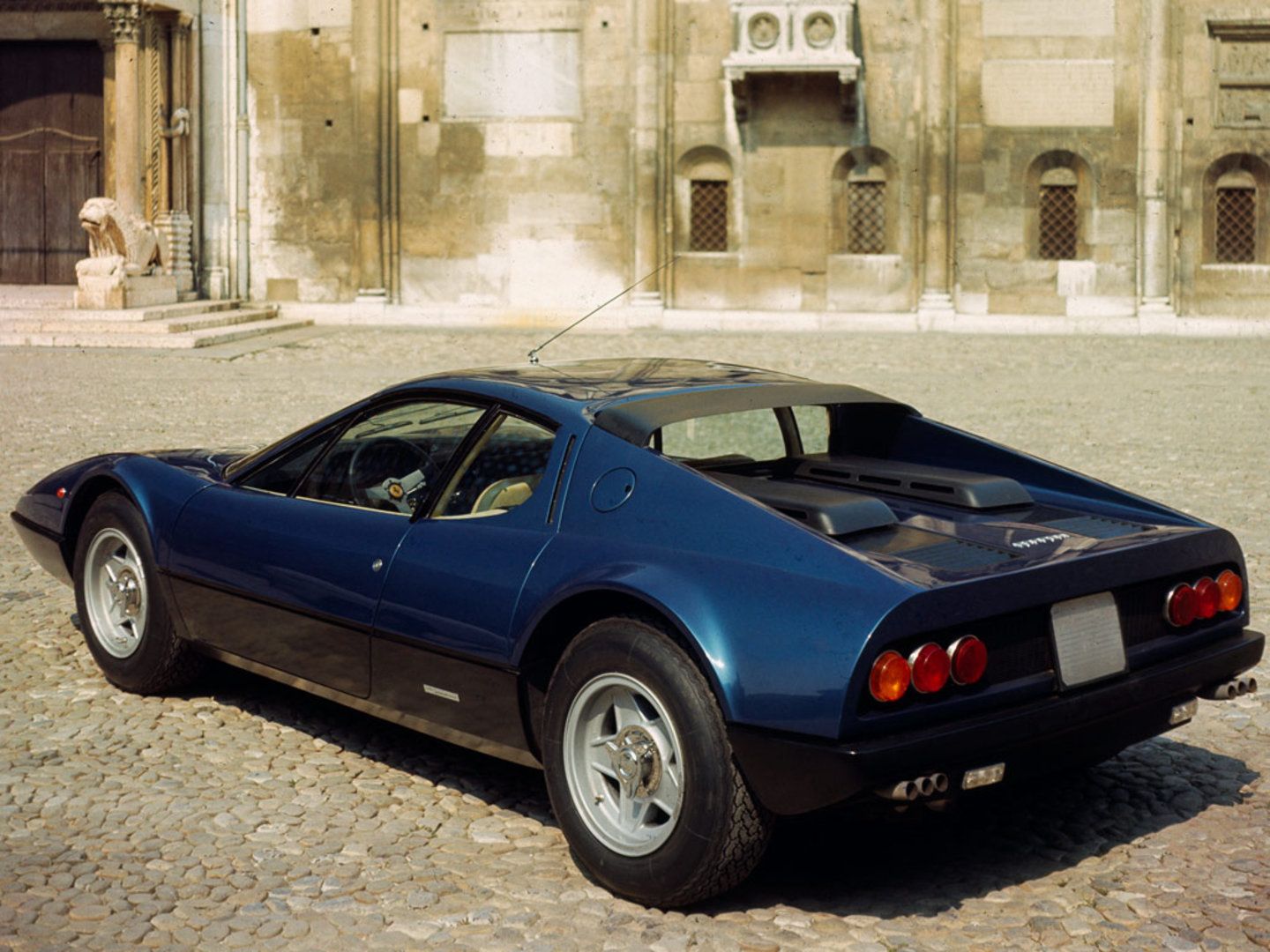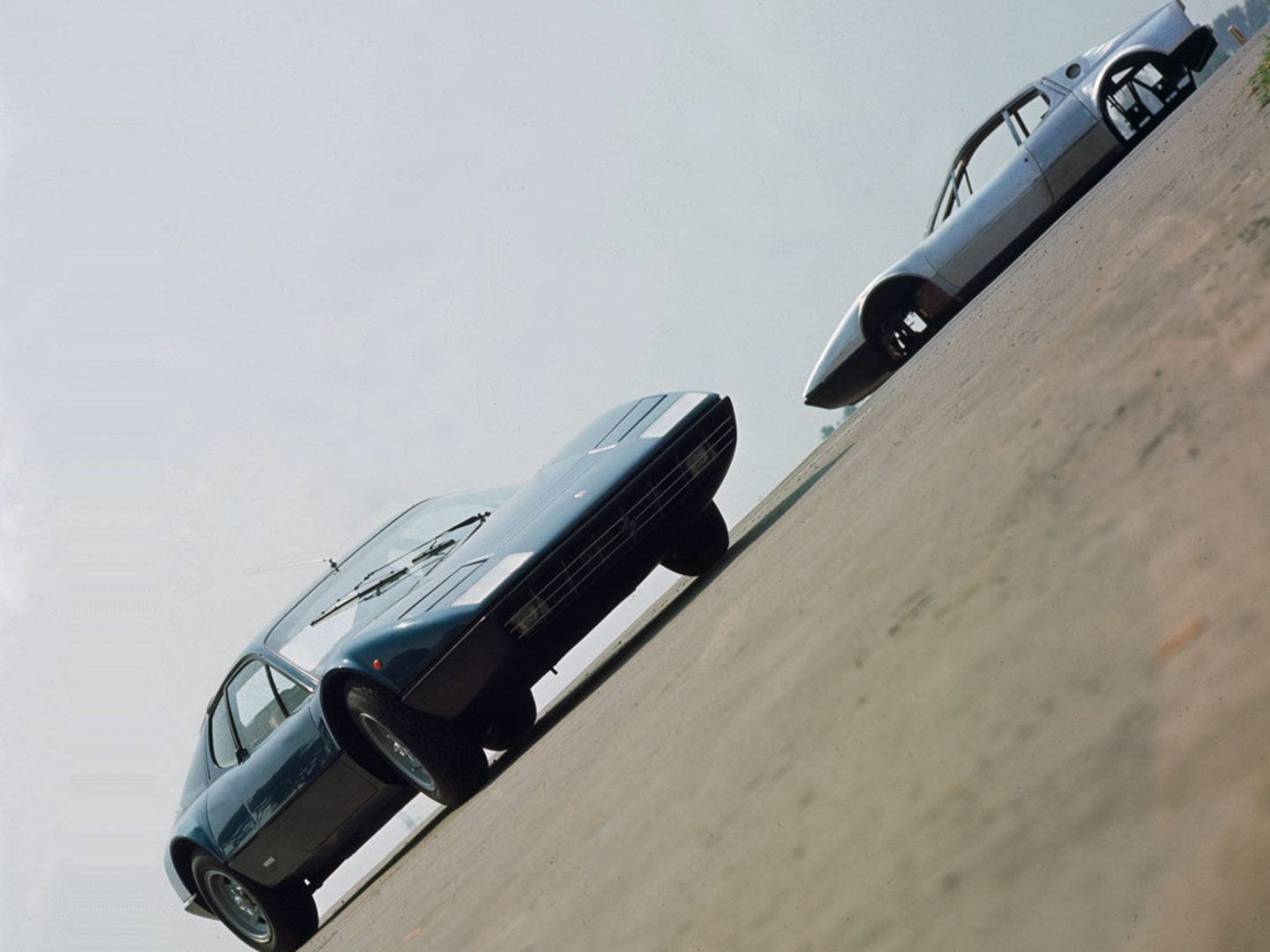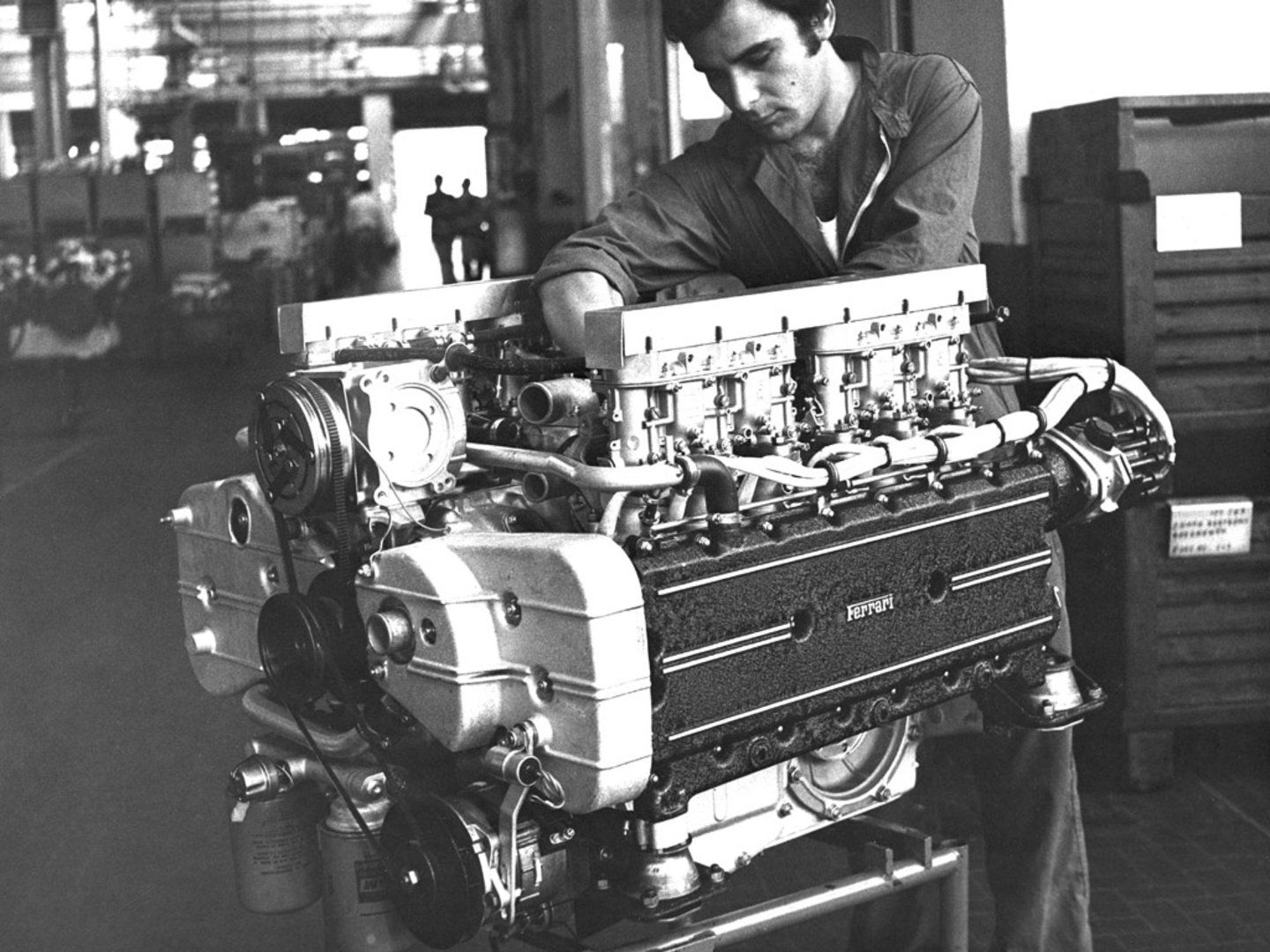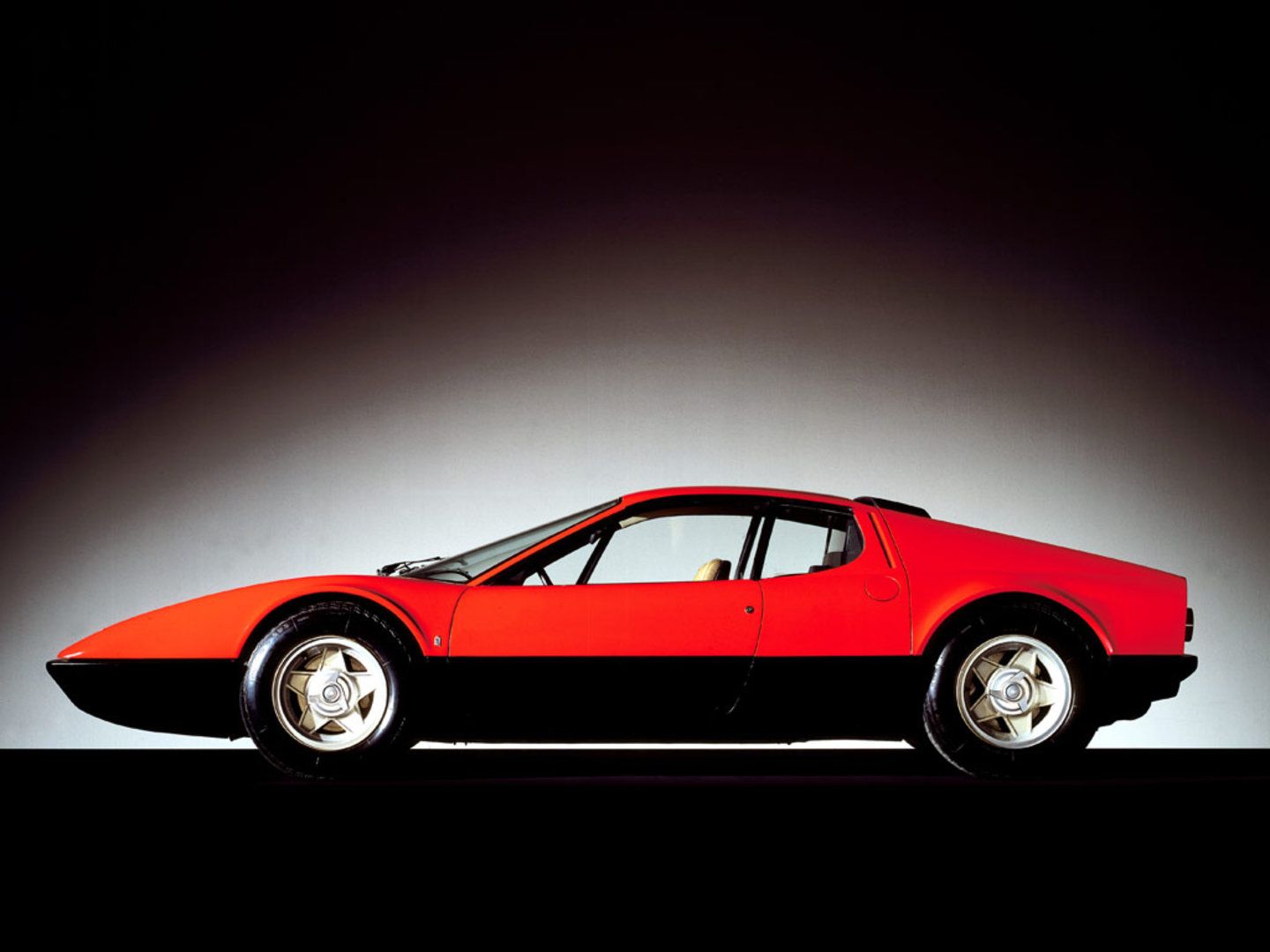By 1972, Ferrari->ke252 was actually a little bit behind the times, and for a company whose reputation was staked on performance and technological prowess, that just wouldn’t do. Although a mid-engine layout had all but become a requirement for Grand Prix and sports-GT prototype racers in the early 1960s, Ferrari still lacked a mid-engine road car. This absence was made more glaring by the success of the Lamborghini Miura and then the Countach, which became an instant icon when it first hit the streets in 1971 in spite of a lack of racing pedigree.
The challenge could not go unanswered, and Ferrari’s return shot was the 365 GT4 BB.->ke3522 Ferrari’s first mid-engine flat twelve-cylinder road car made its debut in 1971 and hit the streets two years later. The car was based on the Pininfarina P6 concept car that appeared in 1968, and replaced the wildly successful front-engine Daytona. The new chassis was combined with a new flat-twelve engine, and this pairing would set the tone for Ferrari’s twelve-cylinder road cars for years to come.
There was a good reason for this: the 365 GT4 BB delivered on all of its promises, with interest. Capable of over 175 mph, it was easily among the world’s fastest road cars. Racing success wasn’t quite as forthcoming, and the racing 365 GT4 BB fielded by Luigi Chinetti’s North American Racing Team (NART) was not particularly competitive. That didn’t stop the 365 GT4 BB from becoming one of Ferrari’s most iconic cars, however. What it gave up in showmanship to the Countach,->ke387 it made up in athleticism.
Continue reading to learn more about the Ferrari 365 GT4 BB.
1973 - 1976 Ferrari 365 GT4 BB
- Make: Array
- Model: 1973 - 1976 Ferrari 365 GT4 BB
- [do not use] Vehicle Model: Array
Exterior
It’s hard to believe that the 365 GT4 BB first hit the streets in 1973. Unlike the comparatively purposeful mid-engine race cars of the period, Ferrari’s Pininfarina-styled body was a dramatic, flowing envelope that exuded otherworldly performance thanks to a flat, pointed nose with retractable lights, low-slung passenger cabin and flying buttresses at the rear. A set of six taillights resided in a black panel at the snipped-off rear. Two-tone 365 GT4 BBs show off Ferrari’s distinctive low waistline. The doors, trunklid and engine cover were aluminum, to save weight, while the rest of the car was rendered in steel. A one-piece front lid hinged dramatically forward for spare tire access. (Incidentally, this was the first roadgoing Ferrari to use a mini-spare.) It was less otherworldly than Lamborghini, but the more purposeful look suited Ferrari.
Exterior Dimensions
|
Length |
4,360 MM (171.65 Inches) |
|
Width |
1,800 MM (70.86 Inches) |
|
Height |
1,120 MM (44.09 Inches) |
|
Wheelbase |
2,500 MM (98.42 Inches) |
|
Front track |
1,500 MM (59.05 Inches) |
|
Rear track |
1,500 MM (59.05 Inches) |
Interior
The interior was instantly recognizable as a Ferrari cabin: black, thin-shelled seats, a three-spoke wheel with the prancing horse dead-center, a chrome-gated shifter and a purposeful red-on-black instrument panel. The 365 GT4 BB offered reasonable interior room, considering its low ride height.
Drivetrain
The 4.4 liter all aluminum flat-twelve engine was equally influenced by the 3.0 liter twelves used in Ferrari’s race cars, but shared its internals as well as bore and stroke with the outgoing Daytona. It produced between 344 and 360 horsepower with four Weber carbs and dual overhead cams. To capitalize on the engine’s low height, the five-speed manual transaxle was mounted underneath it, which improved packaging but proved to be bad for the car’s balance. Top speed was just shy of 175 mph.
The fully independent suspension featured double wishbones and coil springs at all four corners. Though notoriously tail-heavy, contemporary drivers found the 365 GT4 BB easier to drive quickly than the Lamborghini Countach, and when it came to supercar bragging rights, that was a mark in Ferrari’s favor.
Prices
Ferrari built 387 365 GT4 BB models between 1973 and 1976. Even without a long list of racing successes, these cars enjoy high collector values. Auctions in 2015 have seen 365 GT4 BBs changing hands consistently in the $400,000 to $500,000 range.
Competition
Lamborghini Countach
The Countach, more than the Miura, might have been the straw that broke the camel’s back when it came to getting Enzo Ferrari to commit to a high-powered mid-engine road car. The Countach debuted in 1971 and looked like it had driven to earth from outer space. With its design, the V12 was practically unnecessary, but the fact that Lamborghini’s supercar had world-beating performance to go with its dream-car looks ensured that the automotive world would never be the same.
Read our full review on the Lamborghini Countach here.
Maserati Bora
Maserati’s first mid-engine road car was more civilized than many, with a full-sized trunk, adjustable pedals, sound-deadening materials and generous cabin space. That didn’t stop it from topping 170 mph thanks to a powerful 4.7 liter V8.
Conclusion
Ferrari’s first mid-engine 12-cylinder road car didn’t always have the curbside punch of the Lamborghini Countach, but its performance spoke for itself. The 365 GT4 BB and its descendants became known as the “Boxer” Ferraris, after the engine layout, and remained the marque’s flagships. Ferrari never went back to a front-engine layout for its flagship model.


